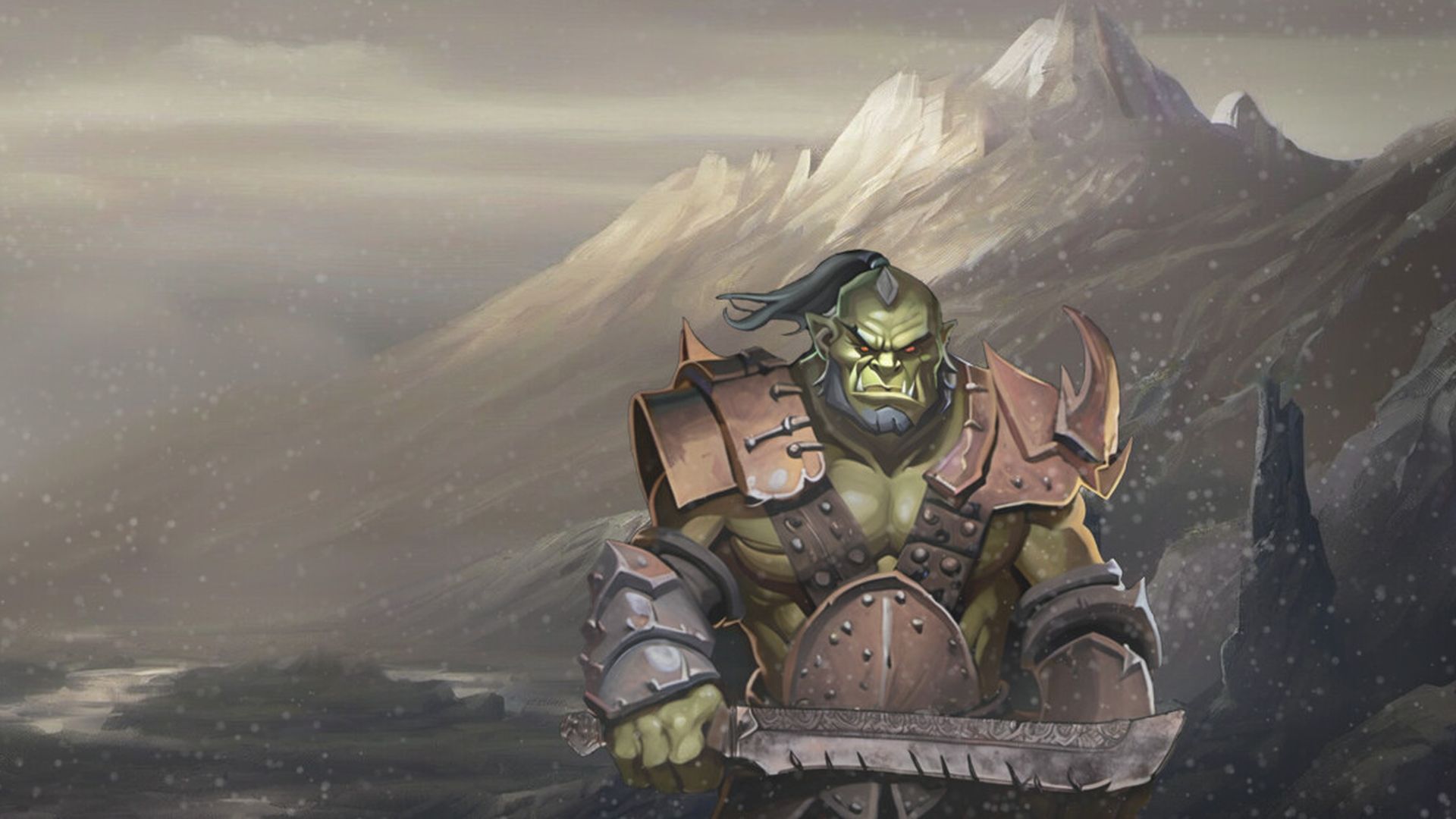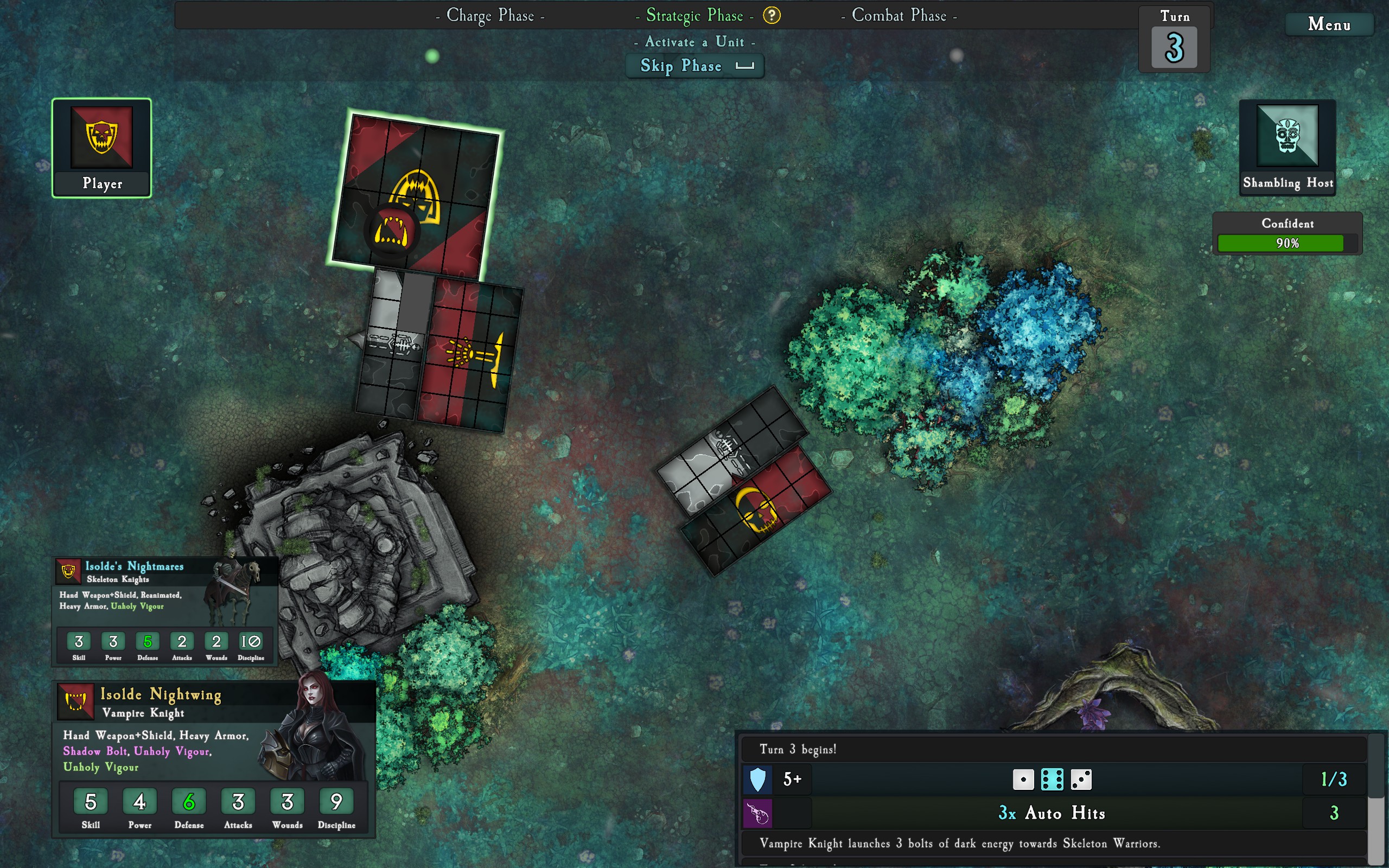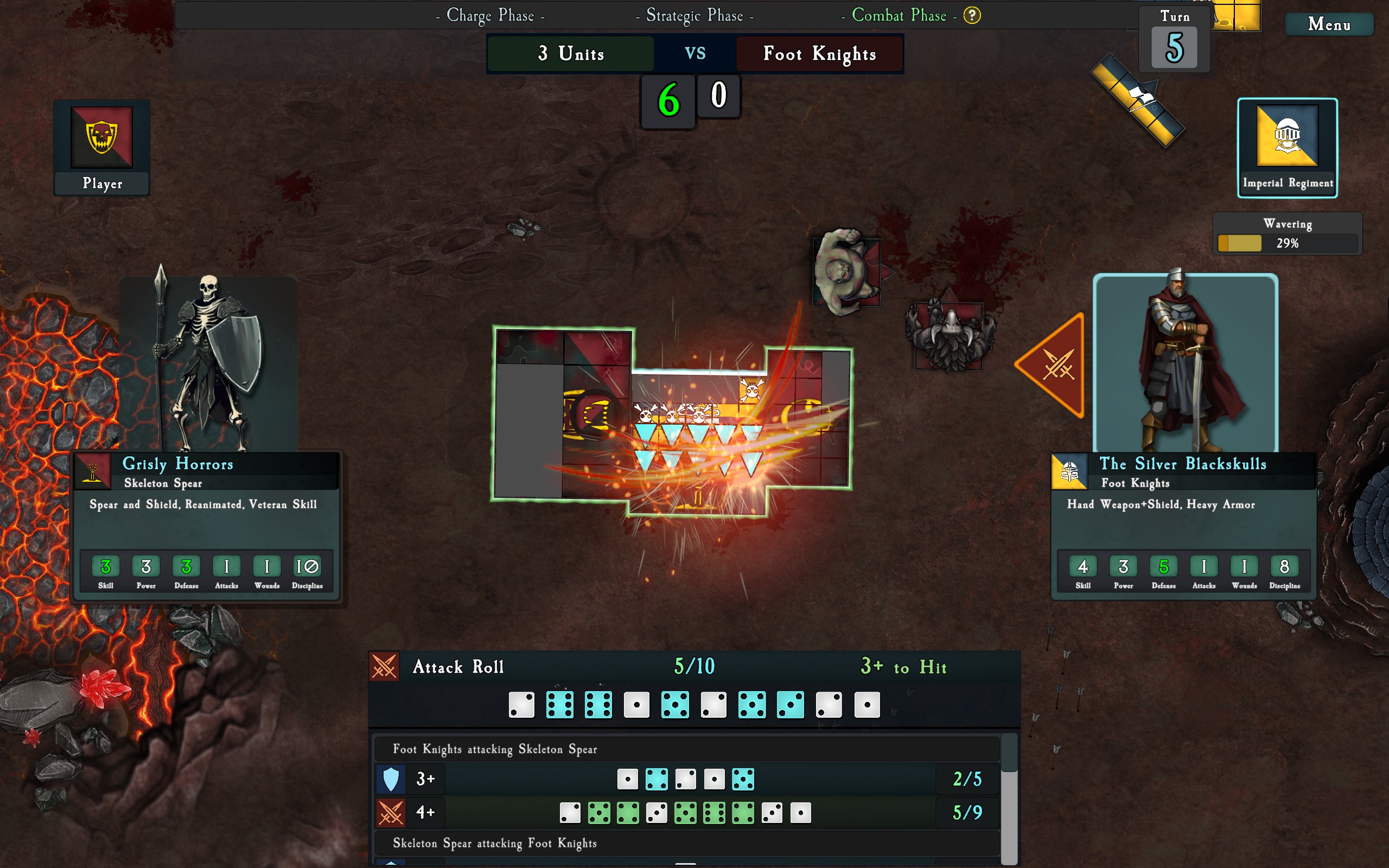If you have fond memories of Warhammer battle reports from antique issues of White Dwarf, here's a turn-based wargame that's basically just those
The children may not yearn for rank-and-flank strategy, but I sure do.

If names like "The Battle of Grimdal's Tomb" or "The Battle of Red Axe Pass" resonate with you like "Crécy" would to a medieval English longbowman, then the wilfully lo-fi graphics of SOVL: Fantasy Warfare are a Proustian rush waiting to happen.
Units are represented by color-coded rectangles, with line art for artillery, monsters, and the terrain they fight around, all depicted from a top-down perspective as detached as any view of a tabletop. It looks rather a lot like a battle report from an old issue of Games Workshop's in-house White Dwarf magazine some time in the early 1990s.

This powerfully straightforward art style makes manoeuvering in SOVL easy to grasp. It's a turn-based wargame where positioning matters—charging into a unit's flank or rear gives +1 to your combat results, and if a unit breaks and flees while surrounded, it's automatically destroyed. That results in some interesting decisions, like whether you want your gryphon to wing over that chasm in the middle of the battlefield to attack the artillery faster, or keep it on a flank to rear-charge one of your opponent's bigger regiments as soon as they engage one of your own.
The focus is kept on those kind of sweeping, general-in-a-tent decisions because the rules are so simple. You won't have to learn Warhammer Fantasy Battle to play SOVL, which has its own rules you can read on the official Github. Though it resembles Warhammer in that you're rolling fistfuls of virtual six-siders to resolve each combat, you go straight from rolling to hit to rolling to save, skipping the roll-to-wound in the middle. The psychology rules have been streamlined as well, though I do miss having to roll to see if my giant's so drunk he falls over each turn.
While SOVL does have online multiplayer I've been sticking to the singleplayer mode, which lets you play a campaign of linked battles broken up by random events on a map of nodes just like the one from Slay the Spire. You take the same army through two of those in a row, earning experience and gold, hiring mercenaries and buying banners and hoping you'll be ready to take on the final elite battle when it arrives.
While you choose an army at the start, those mercenaries can be a pleasingly random selection, like when my vampire knight's army of the dead was joined by an Imperial captain on a gryphon and a unit of goblin wolf riders, as well as a feral giant to fight alongside my more thematically appropriate zombie one.

The armies are renamed but still blatantly Warhammer-ish in their inspirations, with ratkin standing in for skaven and reptilians for lizardmen, for instance. Though SOVL is free-to-play, certain armies are only playable if you buy the relevant DLC, so if you want to play as the Darkborn Elves or Deepwood Guardians, for instance, you'll need to pay. The base game is available for zero dollars and zero cents on Steam.
The biggest gaming news, reviews and hardware deals
Keep up to date with the most important stories and the best deals, as picked by the PC Gamer team.

Jody's first computer was a Commodore 64, so he remembers having to use a code wheel to play Pool of Radiance. A former music journalist who interviewed everyone from Giorgio Moroder to Trent Reznor, Jody also co-hosted Australia's first radio show about videogames, Zed Games. He's written for Rock Paper Shotgun, The Big Issue, GamesRadar, Zam, Glixel, Five Out of Ten Magazine, and Playboy.com, whose cheques with the bunny logo made for fun conversations at the bank. Jody's first article for PC Gamer was about the audio of Alien Isolation, published in 2015, and since then he's written about why Silent Hill belongs on PC, why Recettear: An Item Shop's Tale is the best fantasy shopkeeper tycoon game, and how weird Lost Ark can get. Jody edited PC Gamer Indie from 2017 to 2018, and he eventually lived up to his promise to play every Warhammer videogame.

